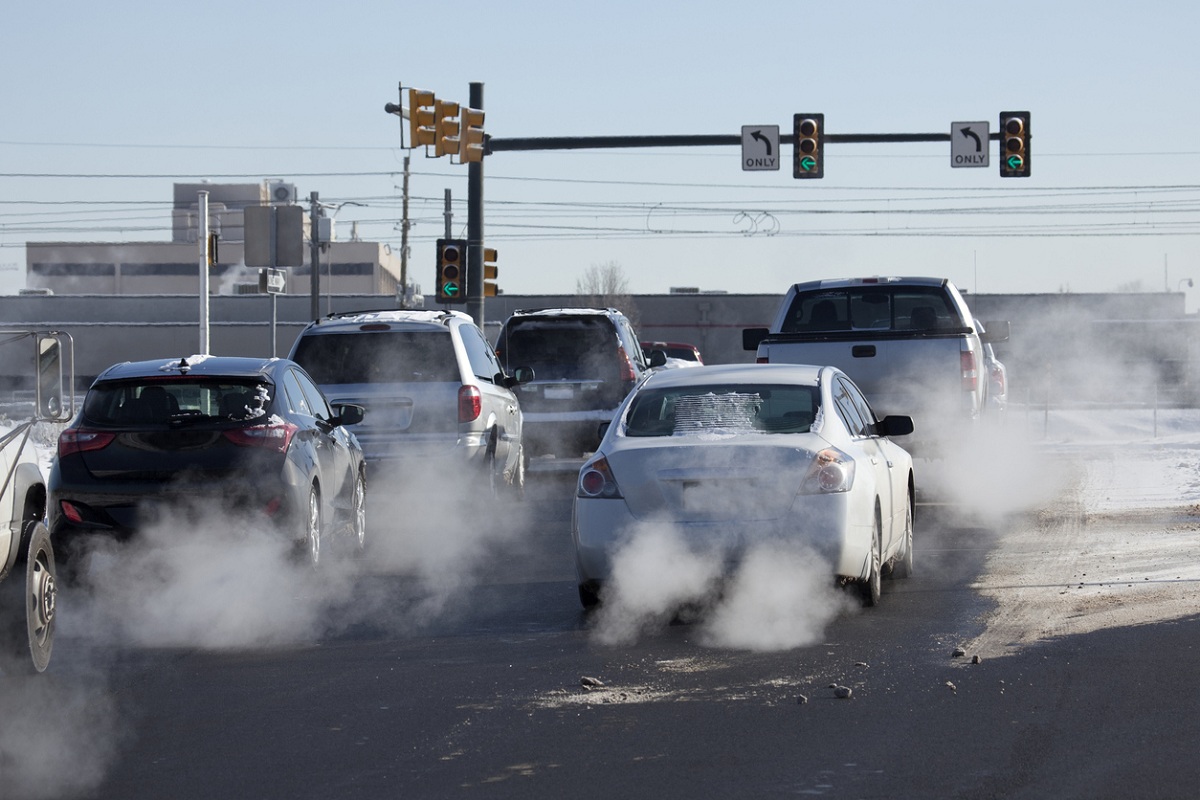Vehicles have emerged as the biggest contributor to particulate pollution in Delhi. Their real time share increased to more than 50 per cent during the early phase of winter (October 24-November 8, 2021), says a study released on Thursday by the Centre for Science and Environment (CSE).
The CSE study has analysed the real-time data on source contribution done by the Decision Support System (DSS) for Air Quality Management of the Indian Institute of Tropical Meteorology (IITM) in Pune.
The other contributors, in descending order, are household pollution, industries, the construction sector, solid waste and road dust.
An additional CSE analysis of the trends in traffic speed in the city – a measure of congestion — during early winter (27 October- 6 November 6) on 15 stretches of key roads shows that traffic congestion is back to pre-pandemic times and correlates with the pollution peaks.
“Clearly, after the closure of all coal-based power plants, expansion of natural gas usage in industry and controls on dirty fuels, vehicles have emerged as the biggest real-time contributor among the local sources of winter pollution in Delhi this year. Action on transportation has to gather strong momentum. At the same time, action on waste management, clean energy access to households and dust control must be speeded up,” points out Anumita Roychowdhury, Executive Director-Research and Advocacy, CSE.
The CSE study has analysed the real-time data on the relative contribution of different pollution sources to Delhi’s air quality. It has accessed data for every alternate hour for the 24 October-8 November period. The pollution sources include transport, industry, construction, waste burning, energy, residential sources, road dust and others.
The analysis makes it clear that vehicular contribution is half or more. This is followed by household pollution ranging between 12.5 and 13.5 per cent, industry (9.9 and 13.7 per cent), construction (6.7 and 7.9 per cent), waste burning and road dust (each varied between 4.6 and 4.9 per cent and 3.6 and 4.1 per cent, respectively). This indicative trend is based on the trends visible every alternate hour during 24 hours of the study period.
The DSS of the IITM is part of the ‘Air Quality Early Warning System’ and provides information on the potential emission sources affecting air quality in Delhi. It uses an online chemistry transport model — ‘Weather Research and Forecasting with Chemistry (WRF-Chem). Its modelling uses available emissions inventory for Delhi and the surrounding 19 districts as well as the PM 2.5 data from the Central Pollution Control Board (CPCB) monitoring stations and satellite imaging of pollution.
This provides quantitative information on the contribution of emissions from Delhi’s own sources and the 19 districts in the National Capital Region (NCR) and also the contribution from biomass-burning in the neighbouring states. This can also indicate the effects of possible emission source-level interventions on the air quality event in the national capital.
The CSE study says the DSS system also tracks data from sources outside Delhi – 19 districts in the NCR as well as biomass burning in neighbouring states. During 2-6 November, the contribution of the NCR dominated in the initial phase going up to 70-80 per cent, but its share declined during the smog episode post-Diwali when the relative contribution of Delhi’s own sources increased.
Similarly, the contribution of biomass burning from other states remained low during the initial pre-Diwali phase but peaked post-Diwali. Clearly, the calm conditions during the smog episode post-Diwali have reduced the intrusion of cross-boundary movement from the NCR and enhanced the share of local pollution in Delhi.
On the other hand, the long-range transport wind brought more pollution due to biomass burning from the neighbouring states, the CSE study added.
Also, during the day it has been noticed that the overall contribution of Delhi’s own sources increases normally during evening hours and lasts until early morning hours (7.30 pm to 9.30 am).












